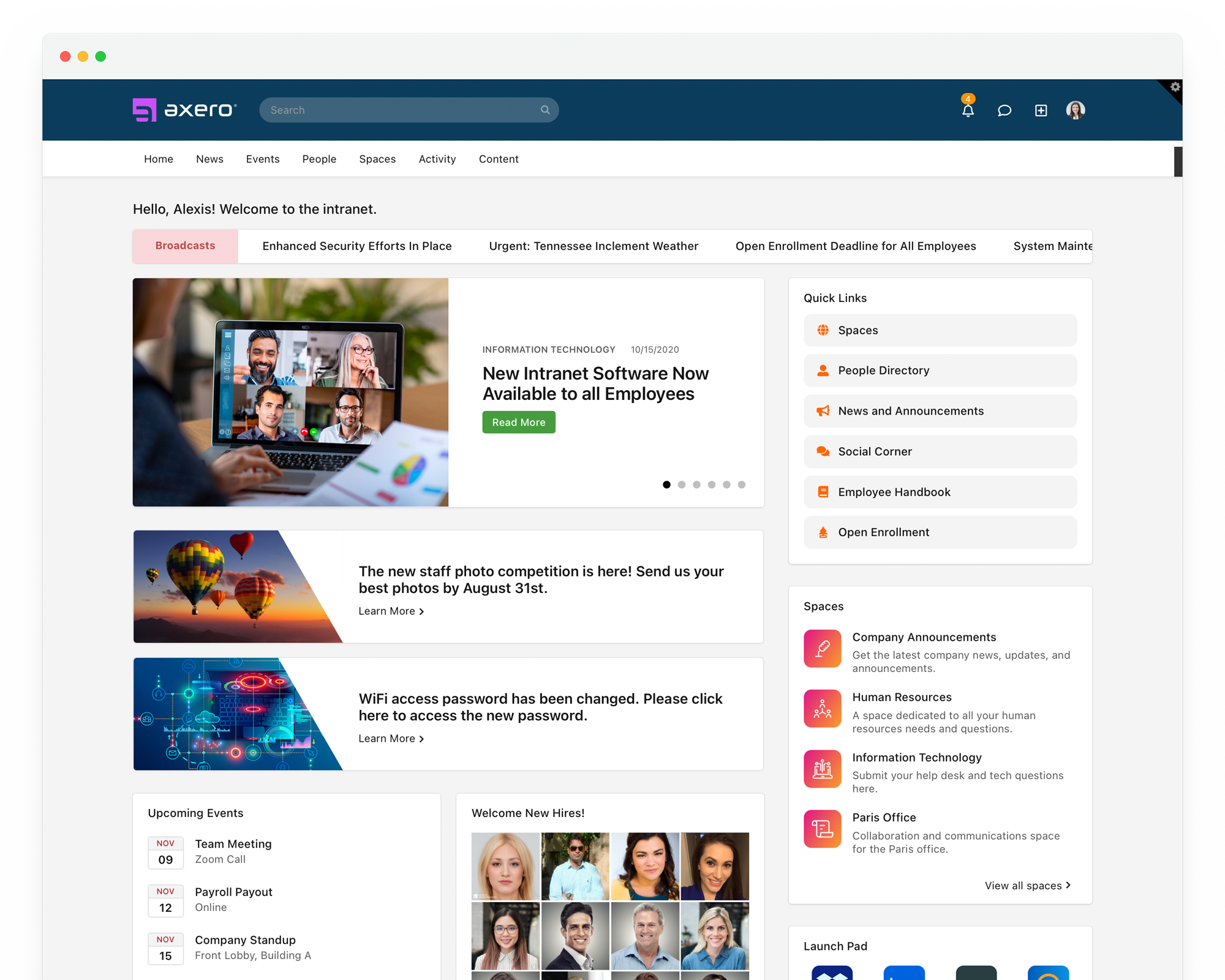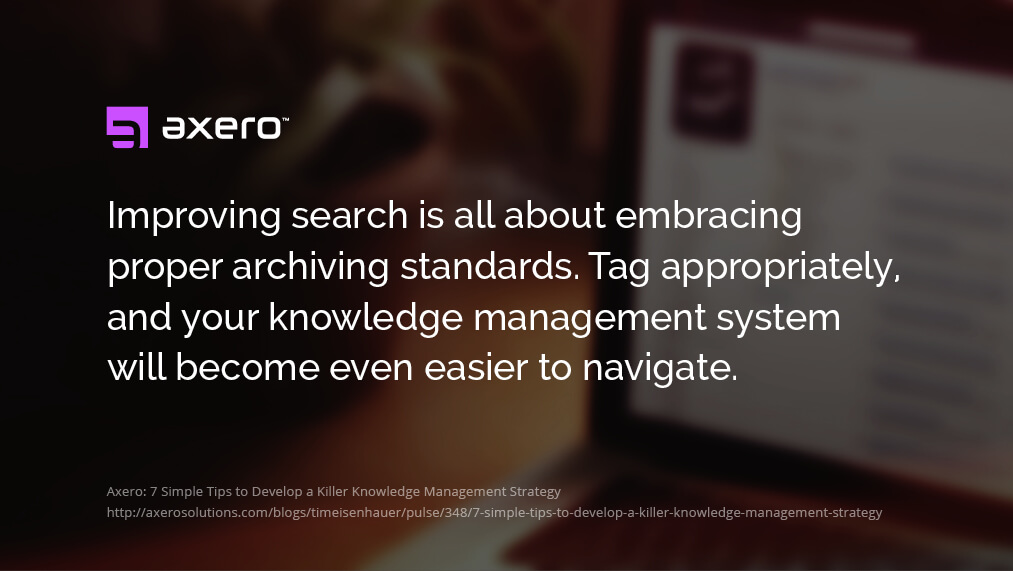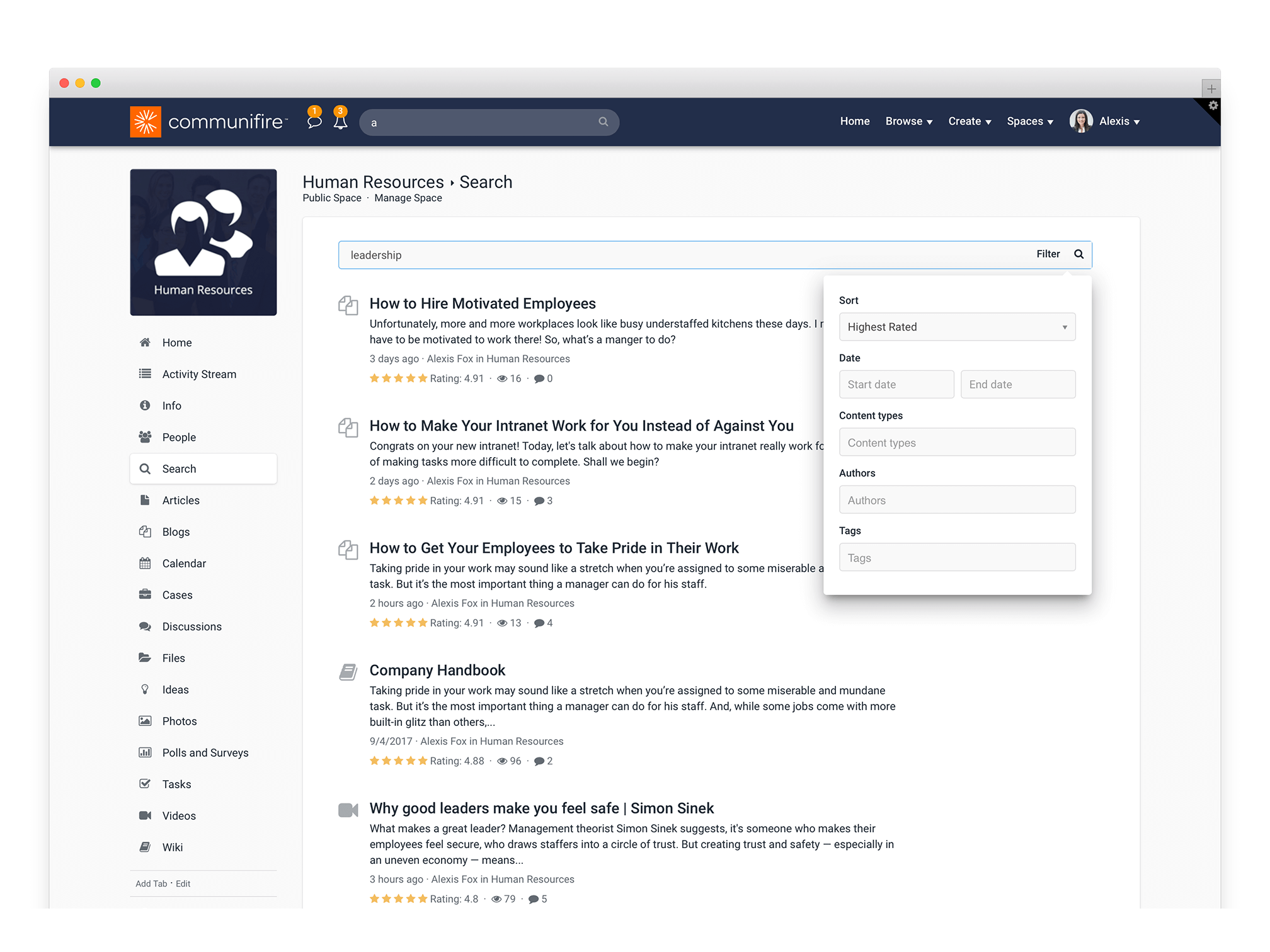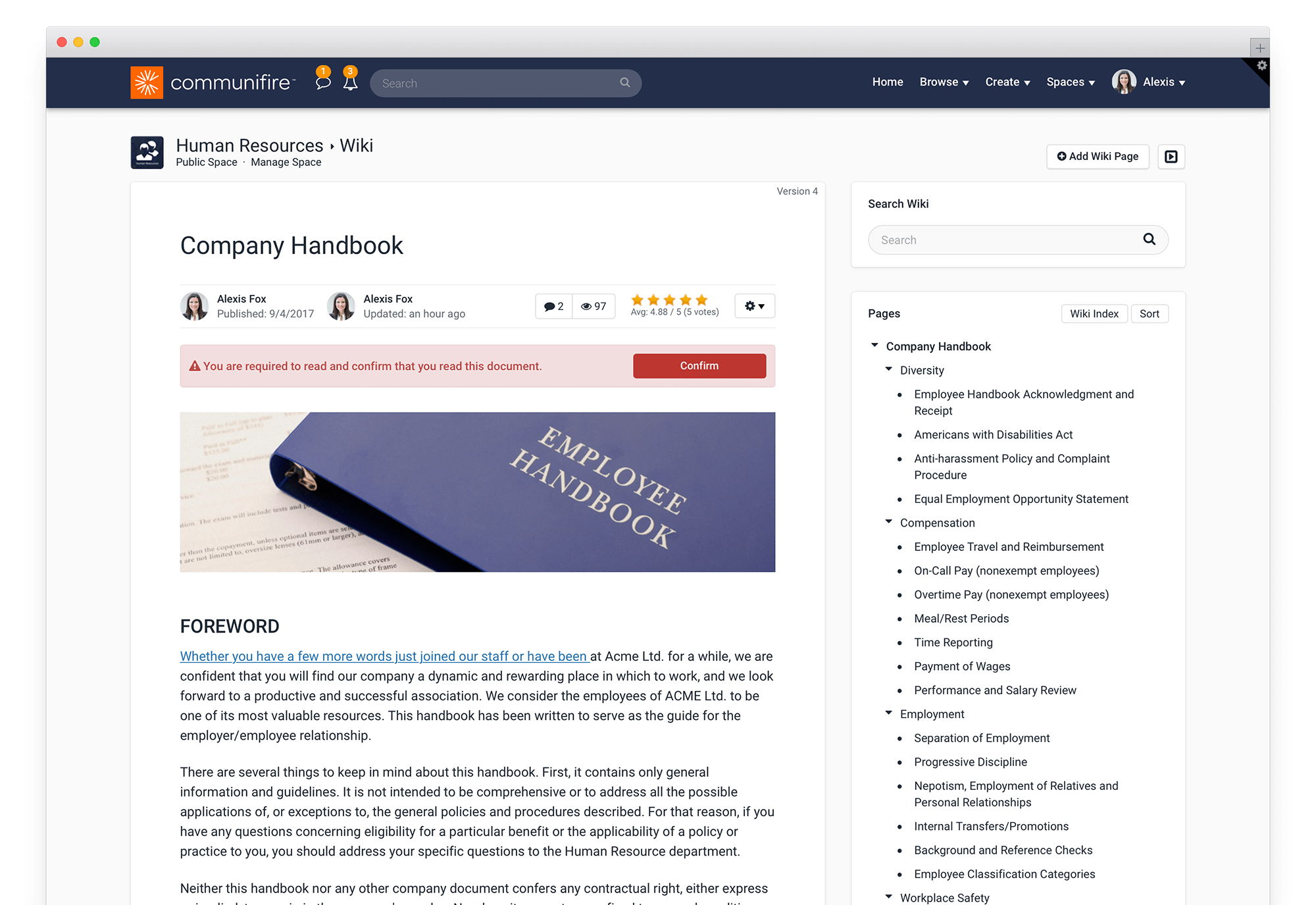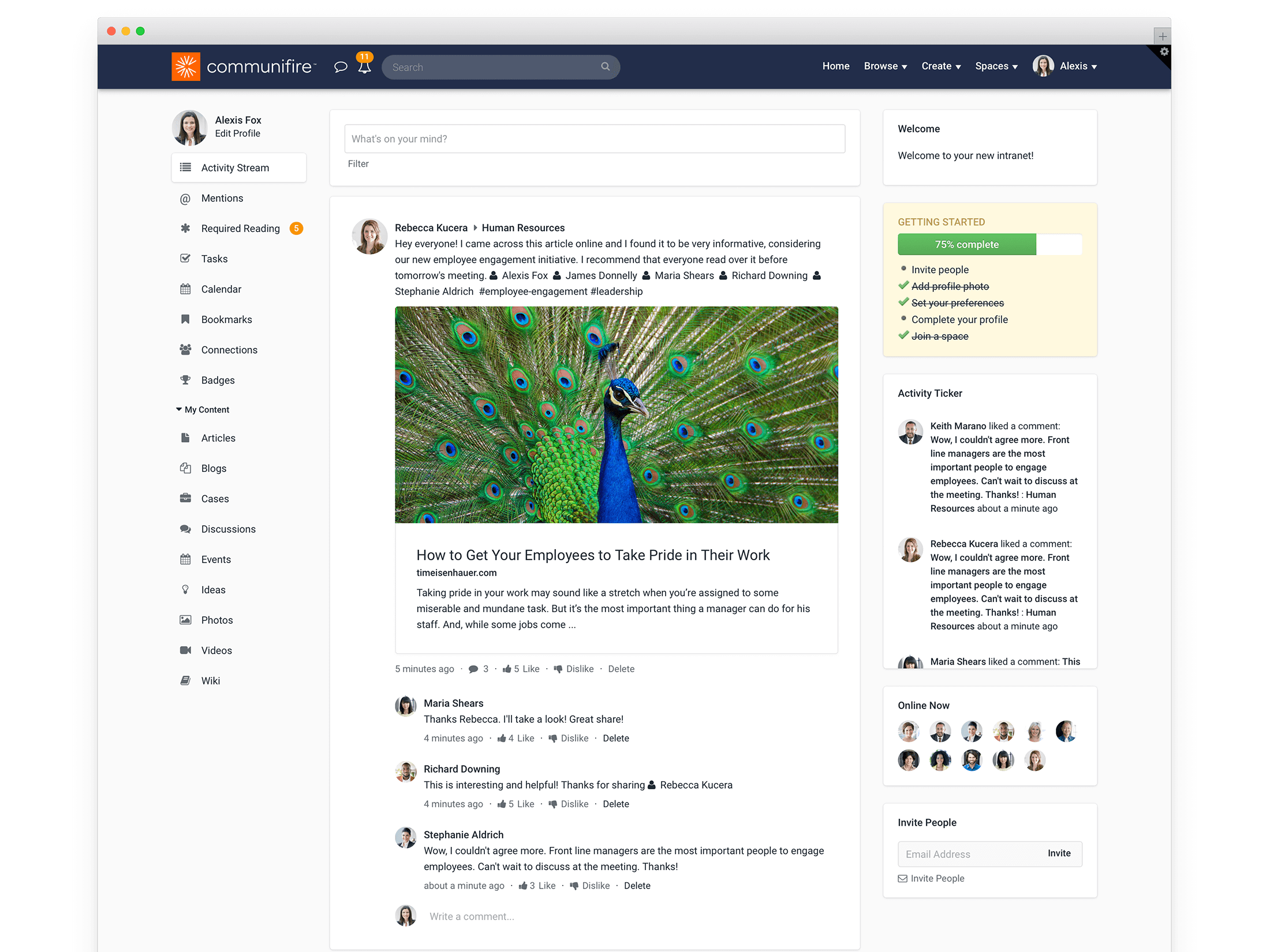When was the last time you actually sat down and talked about your company’s knowledge management strategy (KM strategy)? Knowledge management software is your organization’s greatest line of defense when it comes to centralizing information and aligning employees in today’s fast-moving business landscape.
In 2020, humans created 2.5 quintillion bytes of data every day. For reference, there are 18 zeros in a quintillion! Businesses need the right technology and strategy to keep up. That’s where your KM strategy comes into play. With a well defined strategy, you can efficiently organize, capture, identify, and distribute information.
What is a knowledge management strategy?
A knowledge management strategy is the framework and best practices your organization uses to manage, centralize, distribute, and share knowledge to departments and your entire workforce. By prioritizing your KM strategy, you improve productivity and efficiency, while cutting back on wasted time and department silos.
Employees can make quicker and more informed decisions, support teams can assist customers faster, and employees as a whole have the confidence to solve problems and move busines goals and objectives forward. It all comes down to knowledge sharing, the knowledge management tools you use and the KM strategy you put in place.
To ensure you have the most efficient plan, here are 7 simple tips and best practices to implement into your knowledge management strategy that you and your staff can actually use.
1. Segment everything into spaces.
How many times have you had to wade through a sea of information just to find the document or snippet of knowledge you’re looking for? It happens a lot—especially when organizations merge or expand, but the solution is simple: segment information.
A knowledge management system (KMS), or knowledge base software, allows you to create dedicated spaces for projects, teams, or even documentation. You can make it viewable to everyone, or restrict who has access. Create a space for your communications department, new hires, the employee handbook, or a help center for the support team. By having spaces, all information, files, announcements and people are centralized in one easy to find place.
Segmentation makes it easier to navigate your knowledge management portal and organize documents in a way that makes sense to your team.
2. Set monthly benchmarks and perform a regular knowledge audit.
Ever introduce a new piece of software and then lose track of the post roll-out progress? You’re not alone. It’s an area where a lot of organizations fall short, and it stems from a lack of benchmarks. (Speaking of tracking progress, check out the Axero Intranet ROI calculator to make sure you’re meeting your objectives!)
To make sure your knowledge base is meeting your KM strategy goals, try incorporating monthly benchmarks to monitor activity and progress. Perform a knowledge audit by using built-in analytics. This gives you visibility into content distribution, what and how often people are searching for content, and what space activity looks like. Benchmarks provide well defined goals for your team to achieve. Best of all, they’re flexible and can be adapted to reflect changing priorities.
3. Look beyond customer service.
Your customers are an imperative component to your organization, so providing high-quality customer service is absolutely essential. Keeping your clients happy and ensuring that their issues are addressed immediately should be a top priority for a successful knowledge management strategy.
At the same time, the only way to ensure you are providing your customers with top notch experiences is to support all of your departments with the resources and knowledge they need to do their jobs. Knowledge sharing impacts all of your departments—marketing, sales, HR, accounting, communications, the list goes on. Each is its own discipline, yet when they have a streamlined way to stay informed with company objectives, innovation, productivity, and positive customer experiences soar.
Consider creating different spaces (remember #1 above – segmentation!) in your knowledge management software to instill an organized platform that makes it easier for employees to connect with the right information and people.
4. Make the best possible use of search.
Search is everything. It helps us to go from Point A to Point B quickly, so we can get the information we need to accomplish a goal. As you’d expect, search is a huge part of your knowledge management strategy, but it takes effort from you and your staff to make it really work in your favor.
Improving search is all about embracing proper archiving standards. Every time a file or document gets uploaded to your knowledge management system, it needs to be #tagged and attached to specific search terms. This will make recalling it in the future a simple, straightforward process for everyone who uses your KMS.
Tag appropriately, and your knowledge base will be even easier to navigate.
5. Simplify your training procedures.
Training new employees can be tricky no matter how long you’ve been doing it. Not to mention, it can cost an average of $4,000 to onboard a new employee. When you do not have a uniform process in place, you run the risk of not adequately preparing new hires, which drains time, money, and resources.
With the help of a KMS, you can alleviate internal resources by centralizing training videos, documentation, and forms in one place. This allows you to save time and money and focus on other tasks.
6. Develop a framework for content creation as part of your knowledge management strategy.
Your knowledge base is dynamic and evolves over time as users contribute to its content and structure. Current knowledge management systems allow you to create content without leaving your intranet software, saving you and your team considerable time.
Developing a strong framework is a huge part of your knowledge management strategy … so you should ensure that users maintain consistency in content creation. Imagine if you tasked ten different people with writing blogs, wikis, and articles. Chances are you’d end up with ten different formats for each item type. Your framework—which can include built-in templates and a structured KM strategy that employees follow, will streamline the creation process and keep your content aligned with your KMS. You can adapt your framework as needed, provided you and your staff members remain consistent when following it.
7. Encourage community action.
Today’s knowledge management systems are essentially social networks in their own right. Sure, they house your information, but there’s more to the technology.
Your knowledge base connects your team in a powerful community setting. Leverage your staff’s skills and experience by encouraging them to organize, create, and curate content. Make sure all users know their knowledge sharing contributions are valued and vital because it is their contributions that will make your knowledge management a long-lasting resource.
Community action will enhance your knowledge management system, regardless of your organization’s size.
The bottom line.
Your knowledge management strategy will always be a dynamic focus, requiring top-notch online collaboration tools, a well thought-out plan, and a focused commitment from your team. Leverage your information resources to the fullest by implementing a knowledge management software platform and engaging your staff to contribute their knowledge and ideas.
Learn more about the upcoming trends in knowledge management and how you can use them to your advantage in this post: 17 Hot Knowledge Management Trends.




